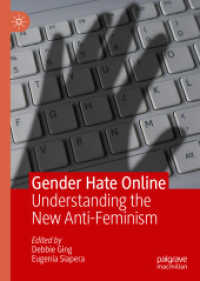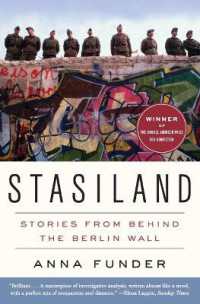Full Description
A comprehensive approach to the study of discourse and conflict, this book explores how opposing communities construe discourse worlds which appear to reflect the existence of "paradoxical realities".
Adopting a novel method for the study of conflict, framed in the cognitive linguistic tradition within Critical Discourse Studies, the book explains how conflict may be discursively created by relying on the study of four main construal operations. Grounded in examples specific to Northern Ireland, each chapter also highlights how the method used could be applied to other conflictual contexts. In doing so, it demonstrates how language and representation in conflict situations may stem from a combination of different layers in conflictual relations and the existence of both overt and covert conflict. It also provides a comprehensive list of linguistic cues upon which researchers can rely for analysing and explaining the role of discourse in conflictual situations.
Contents
List of Figures
List of Tables
Acknowledgements
List of Abbreviations
1. Introduction
2. What Can Cognitive Linguistics Offer for Conflict Studies?
3. The Choreography of Northern Ireland: Historical and Political Background
4. Gestalt and Structural Configuration
5. Attention and Salience
6. Judgement and Comparison
7. Positioning and Perspective
8. Conclusion: Managing Conflict via Discourse
Appendix: A Short Chronology of Post-Agreement NI
References
Index








